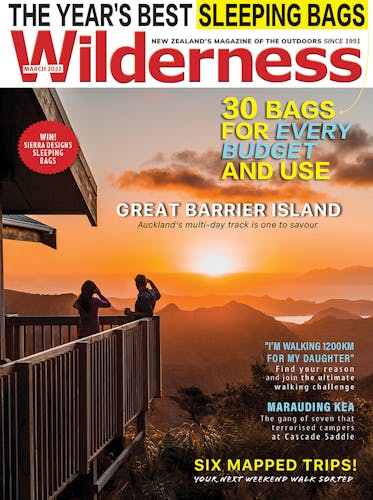Many tramping incidents could have been avoided by recognising the need to change plans in response to changing conditions.
It’s easy to become goal focussed, sticking rigidly to the original plan and then finding yourself in trouble.
Recently, I wanted to complete a section of Te Araroa Trail. I was not fully over a recent illness, so chose a suitable route without significant hills. It had plenty of camping and early exit options. Even with this in mind before setting out, it was still difficult to make the decision to abandon my plans when I found my body was not up to it. It was a good call to pull out as I ended up in the emergency department with breathing difficulties two days later. That would not have been good on the trail.
Picking the goal
Picking the right goal can avoid becoming goal focussed and being forced to change plans. Know the limits of each member of the group and choose a goal for those most limited.
There may be group members whose ability you are unsure of. Some may be unfit, had a recent or chronic illness or injury, they could be children. Choose a goal you are confident they can all reach and have some extension walks or activities in mind if you have the time and energy. For example, the goal may be to reach a hut listed as 3-4hr. If you get there in that time and have the energy, you may walk to a nearby summit or other points of interest nearby.
Alternatively, make the journey the goal rather than the destination. You could plan to take 8hr to reach a hut listed as 3-4hr. Include in your plan regular stops such as a swim, time to identify plants, time for taking photos or just having long breaks to enjoy the view. This is a particularly good option when tramping with young children.
Choose a goal that can be reached within comfortable limits for the whole group. Consider how they will manage hills, mud, narrow tracks, steep drop-offs, rough terrain, unbridged stream crossings or hot open areas in the sun.
Experienced people may choose a goal to be a challenge – something at the edge of their limits. It is important to consider if it is a realistic challenge given current conditions and health status; not beyond their limits.
Planning
Good planning includes having alternatives and identifying escape routes; places you can leave a route to escape unfavourable conditions. If you have planned these, your mind has already been primed to accept a change in plan.
If planning to go to a hut, bring some form of shelter and insulating mat in case you need to camp out. This may be just a plastic sheet and guy rope. There are many reasons for not reaching the hut, and having a shelter enables you to stop rather than push on when you are too tired or conditions have changed.
Check the weather before the trip and consider its impact in terms of the plan. Heavy rain may make rivers and streams uncrossable. Hot sun may make open country unpleasant and risk sunburn or heat exhaustion. Wind, low cloud (clag), cold and snow may all make exposed tops travel dangerous. It is better to consider a different route before starting rather than facing the need to change your plan.
Decision time
Often conditions change slowly, and it’s a gradual niggling thought that maybe the plan should be changed. Meanwhile, you are continuing with your original plan which may be making it harder to change when crunch time comes, especially if it means turning back. Once you get that niggling feeling, it’s time to stop and focus. Have some food and drink and consider the situation. Discuss your thoughts with others. If you decide to continue, set criteria that will trigger a rethink. For example, in one hour, when Point X is reached, if the knee pain gets worse.
The hills will be there for you to come back to another time.
– Heather Grady is an instructor with Outdoor Training New Zealand








